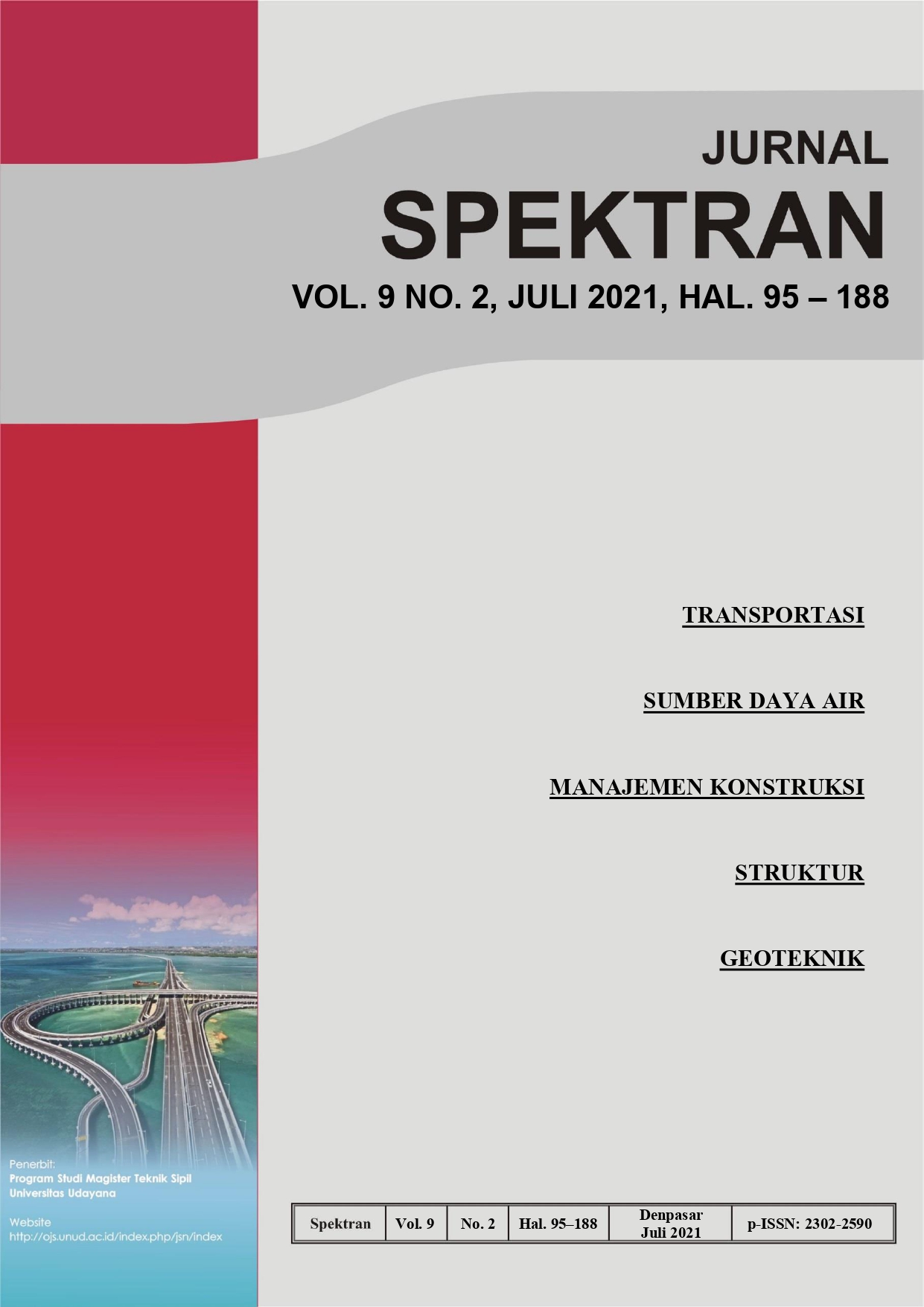STUDI KELAYAKAN EKONOMI PEMBANGUNAN UNDERPASS PADA SIMPANG TOHPATI DI KOTA DENPASAR
Abstract
Private vehicle ownership does not pay attention to the capacity of the road that will cause congestion of the road network in urban areas. Setting The Tohpati Junction with Traffic Signaling Tool is not able to cope, the solution to this condition is to build an underpass. The purpose of the study is to analyze the performance of existing intersections and underpasses in 2025, analyze the amount of costs required for the underpass, analyze the direct benefits of underpass construction, and can be known whether the project is feasible or not with an economic feasibility analysis of the underpass investment built. In addition to using primary data and secondary data in calculations, the method of economic feasibility analysis as a comparison of costs and benefits with indicators Net Present Value (NPV), Benefit Cost Ratio (BCR) and Internal Rate of Return (IRR). The results showed the performance of existing intersections obtained a delay of 373 seconds /smp morning peak hours, for the peak hour of noon 364 seconds / smp, and the peak afternoon 364 seconds / smp, including the level of service F. Simpang assumption underpass built the value of delay peak hours morning 19.02 seconds / smp, for the peak hours of noon 19.33 seconds / smp, and the peak afternoon 18.32seconds / smp, including the level of service A. In realizing the construction of the underpass, it is necessary to pay Rp. 224,964,665,195.28 and direct benefit from the construction of the underpass at Simpang Tohpati in Denpasar City for the cost savings of road users.amounting to Rp.10.407.740.934,00. In general, the underpass construction project at Simpang Tohpati in Denpasar city is economically viable and the terms of the three bank interest rates of 12%,15% and 18% in one year result in a non-negative NPV value, BCR is not less than one and the IRR is not below the bank's interest rate, hence the analysis related to the sensitivity of the bank to the condition of I, II and III.




